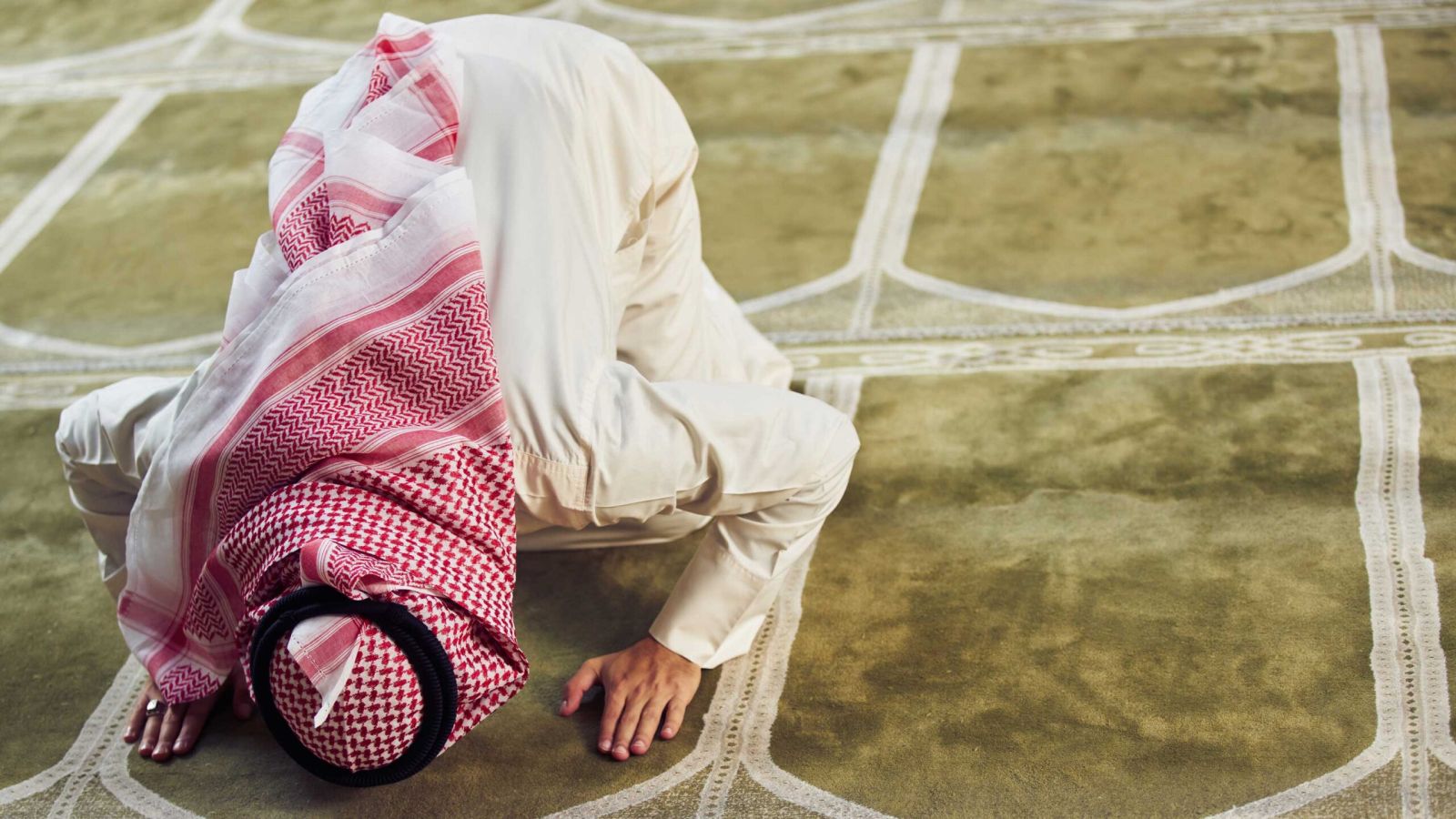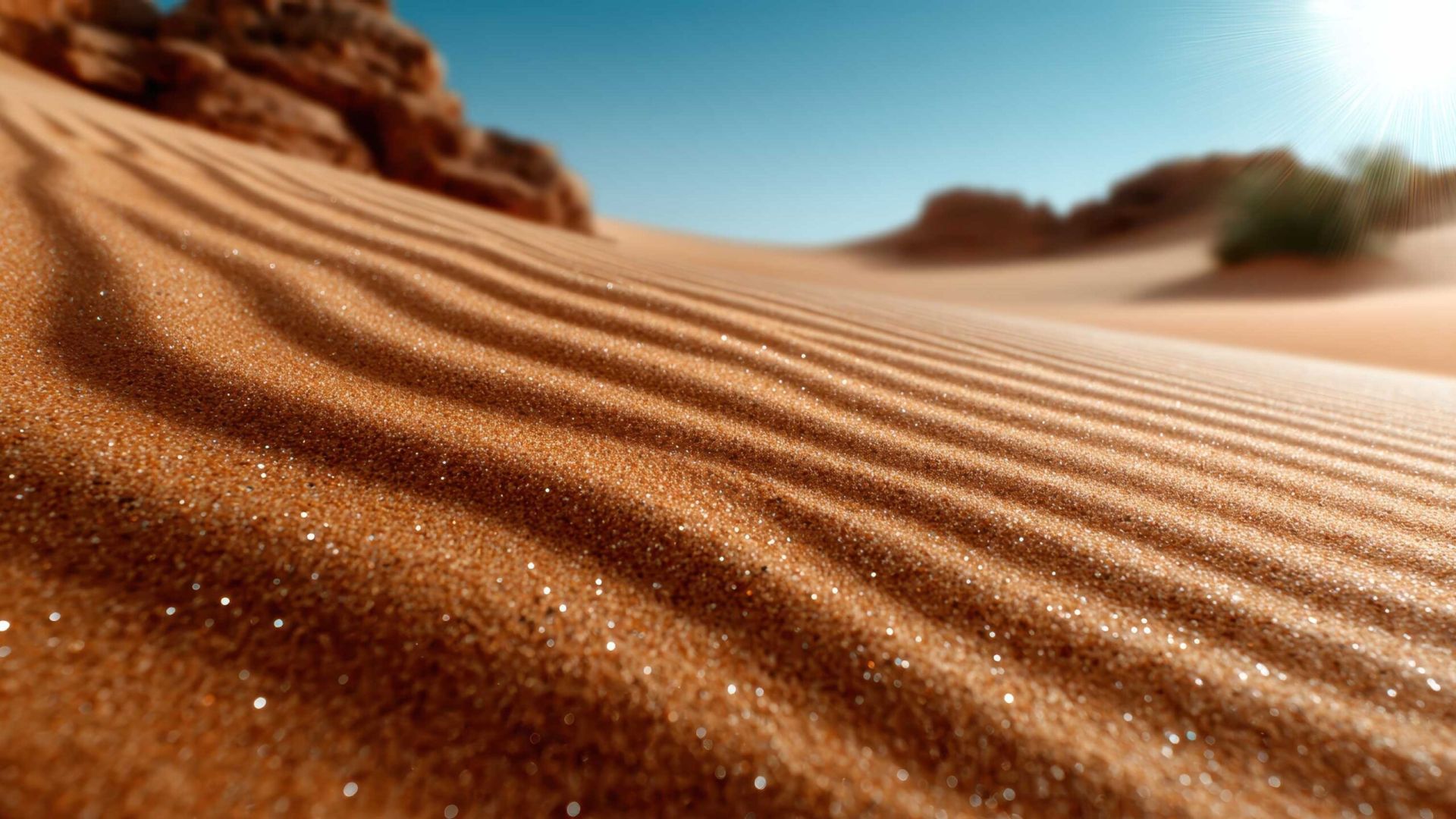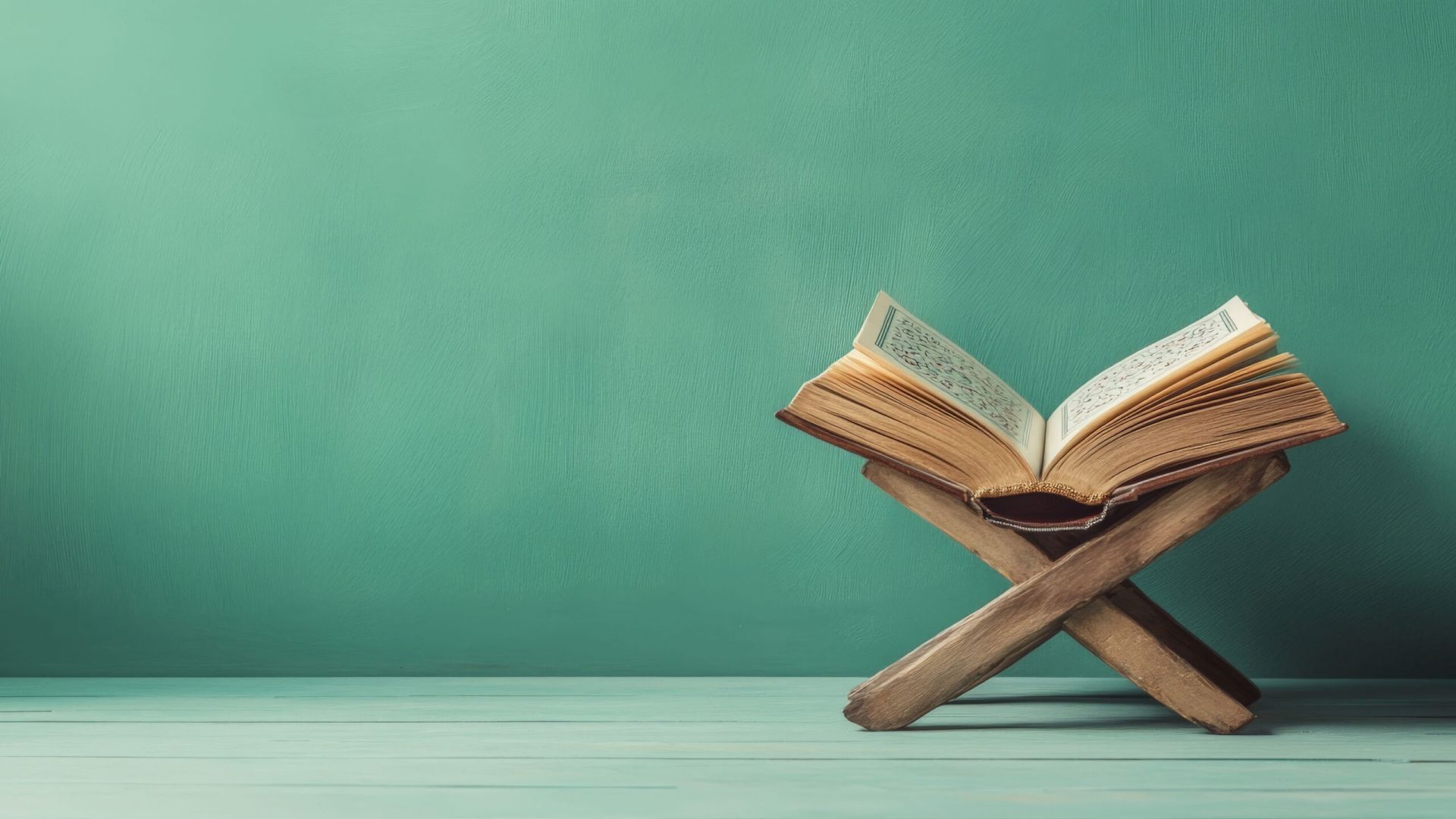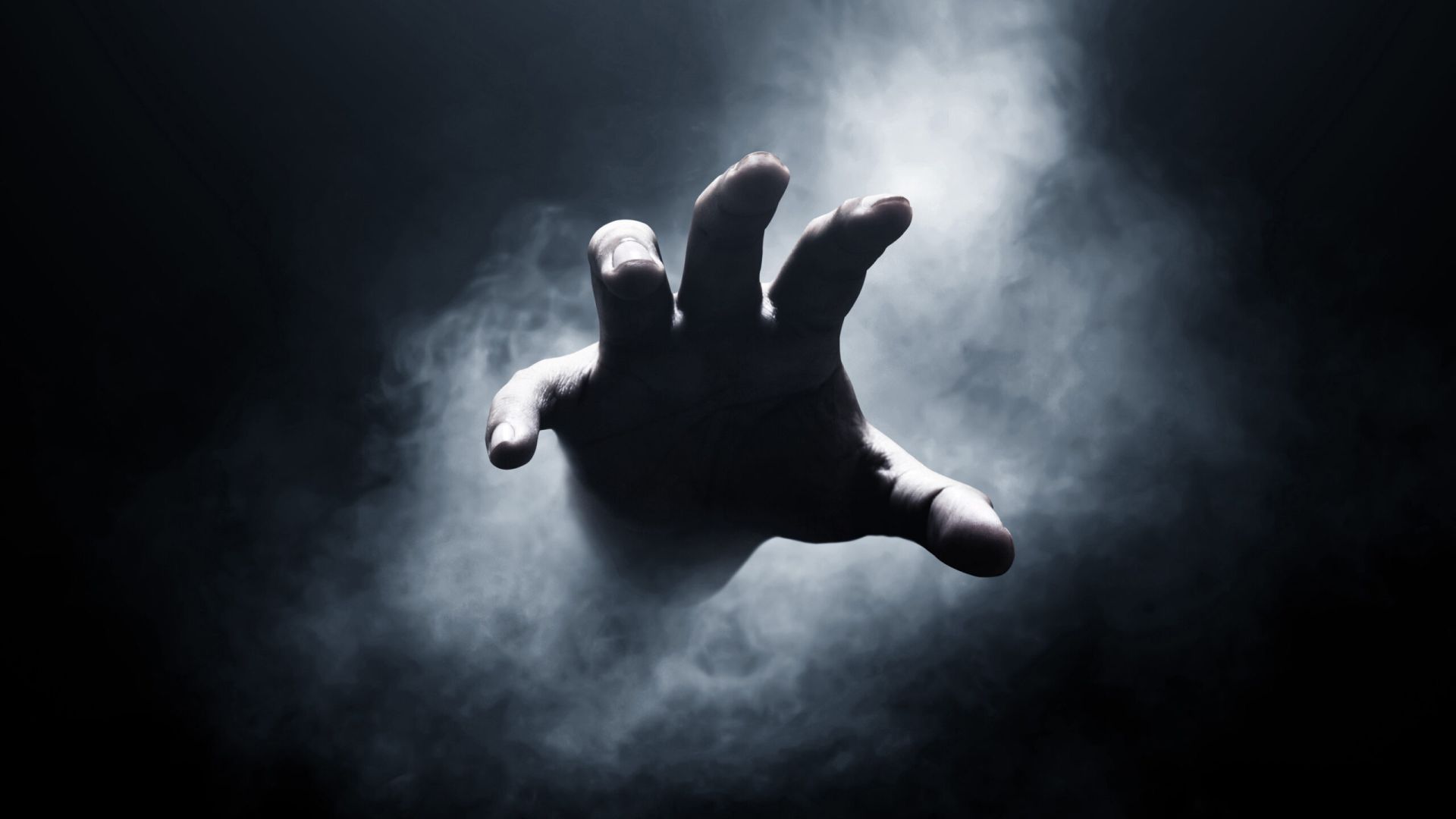Islamic Rulings on Prayer Mats and Praying in Shoes
Shaykh al-Islām Ibn Taymiyyah, Shaykh Muḥammad ibn Ṣāliḥ al-ʿUthaymīn, Imām Nāsir al-Dīn al-Albānī, Imām ʿAbd al-Azīz bin Bāz, The Permanent Committee for Islamic Research and Fatāwá
Islamic Rulings on Prayer Mats and Praying in Shoes
Shaykh al-Islām Ibn Taymiyyah, Shaykh Muḥammad ibn Ṣāliḥ al-ʿUthaymīn, Imām Nāsir al-Dīn al-Albānī, Imām ʿAbd al-Azīz bin Bāz, The Permanent Committee for Islamic Research and Fatāwá
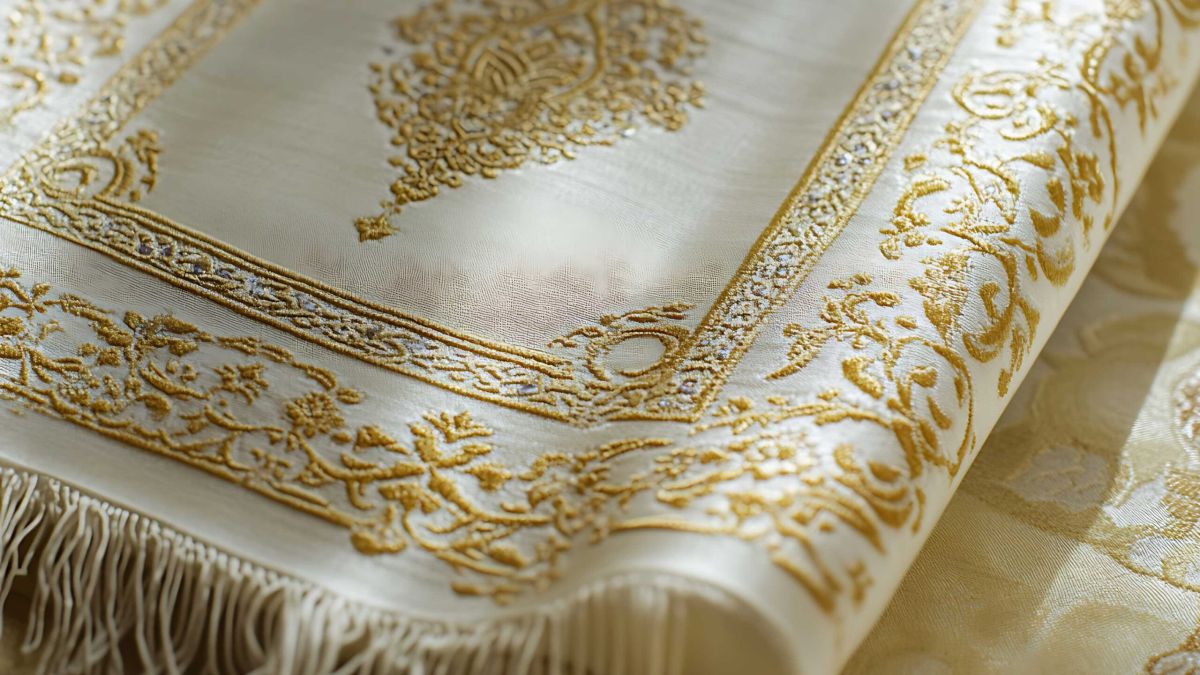

[Q]: What is the Islamic perspective on those who spread prayer mats on the ground in the masjid? Would this act be considered an innovation or not?
Shaykh al-Islām Ibn Taymiyyah:
[A]: All praise is for Allāh—the Lord of everything in existence. As for intentionally and exclusively seeking to pray on specific mats, this was never a practice that was adopted by the pious predecessors among the Muhājirūn1 or the Anṣār2, or those who followed them in excellence. It was not a practice incorporated at the time of the Messenger of Allāh (صلى الله عليه وسلم). Rather, the Prophet (صلى الله عليه وسلم) and his companions would pray in his masjid on the bare ground without any one of them ever spreading a special mat with the express purpose of performing ṣalāh.
It was narrated that when ʿAbd al-Raḥmān ibn Mahdī came to Madīnah, he spread a mat before him in the Prophet’s masjid. Upon seeing this, Imām Mālik ordered him detained. It was said to Mālik: “But he is ʿAbd al-Raḥmān ibn Mahdī!”. Mālik replied: “Are you not aware that spreading a prayer mat—as he has done in our masjid—is an act of innovation?”
It was authentically narrated on the authority of Abū Saʿīd al-Khudrī (رضي الله عنه) that the Messenger of Allāh (صلى الله عليه وسلم) said whilst they were performing iʿtikāf: “Whoever is performing iʿtikāf, let him return to his place of iʿtikāf. For indeed, tonight I have seen myself [in a dream] performing sujūd in mud and water”. In the latter part of the ḥadīth, Abū Saʿīd said: “So, on the morning of the twenty-first [of Ramaḍān], I saw him with the remnants of mud and water on his nose”.3 This proves very clearly that the sujūd of the Prophet (صلى الله عليه وسلم) occurred on dirt. As the roof of his (صلى الله عليه وسلم) masjid was covered with palm fronds through which rain would fall, and its ground was that of the bare earth.
Besides this, it was also narrated that the companions would occasionally perform sujūd on rocky uneven surfaces such that they would use stones4 to perform sujūd upon due to the unevenness of the ground. As narrated in Sunan Abī Dāwūd that ʿAbdullāh ibn al-Ḥārith once asked Ibn ʿUmar (رضي الله عنه) regarding the stones present in the masjid. He said: “One night it had rained and the ground had turned moist, so among us were those who used to hold a stone within his clothing and place it before him [for sujūd] such that when the Messenger (صلى الله عليه وسلم) had concluded the prayer, he said regarding this: “How excellent a practice is this!”5 It was also narrated in al-Ṣaḥīḥayn (al-Bukhārī and Muslim) on the authority of Muʿayqīb that the Prophet (صلى الله عليه وسلم) said regarding a man who would flatten the dirt with his hand before performing sujūd on it: “If you must, do it once only”. These narrations prove that they used to perform sujūd on dirt and stones; so uneven was the ground that some of them [i.e., the Companions] would even use their hands to flatten it before them. To the extent that the Prophet (صلى الله عليه وسلم) disliked this extra movement—considering it non-essential—so he allowed it a single time provided there was a clear need, although complete abandonment of it is superior.
On the authority of Anas ibn Mālik (رضي الله عنه) who said: We used to pray with the Messenger of Allāh (صلى الله عليه وسلم) in extreme heat, to the extent that if one of us was unable to stably place his forehead on the ground, he would spread his garment before him and perform sujūd on it”. This ḥadīth proves that they would only protect themselves when performing sujūd from the sweltering heat of the bare earth with the garments they were wearing like their izār6, their ridāʾ7 or shirt. This also quite clearly proves that they never prayed on mats or pieces of cloth [despite the conditions].
It was also authentically confirmed that the Prophet (صلى الله عليه وسلم) would pray on al-khumrah, as in the ḥadīth of Maymūnah (رضي الله عنها) who said: “The Messenger of Allāh (صلى الله عليه وسلم) used to pray on al-khumrah”.8 It was also narrated in al-Ṣaḥīḥayn (al-Bukhārī and Muslim) on the authority of Anas ibn Mālik (رضي الله عنه) who said that his grandmother Mulaykah invited the Messenger of Allāh (صلى الله عليه وسلم) to partake in some food she had prepared. So he (صلى الله عليه وسلم) ate from it, then said: “Stand and allow me to lead you in ṣalāh”. So Anas (رضي الله عنه) said: So I stood before a Ḥaṣir that had become blackened from frequent use and I used water to moisten it. The Messenger of Allāh (صلى الله عليه وسلم) stood and the orphan boy and I formed a line behind him with the elderly lady behind us. The Messenger of Allāh (صلى الله عليه وسلم) led us in two rakʿah and then left”.
If it was said: “The aḥadīth that mention khumrah may be used as evidence to support the use of prayer mats in general”.
We answer this claim with the following:
- The Prophet (صلى الله عليه وسلم) would only pray on these mats occasionally, not habitually. For example, in extreme heat to protect himself, as evidenced by the aforementioned ḥadīth of Abū Saʿīd (رضي الله عنه) in which he saw the Prophet (صلى الله عليه وسلم) with the remnants of water and mud on his forehead and nose. Therefore, these aḥadīth would not prove the validity of consistently using a prayer mat every time a person prays.
- The scholars have mentioned that the mat that he (صلى الله عليه وسلم) prayed upon was minimal, encompassing only the place of sujūd [that is, his head and hands], dissimilar to the prayer mats [today] that are large enough to encompass a person’s entire body. Again, the small size of his (صلى الله عليه وسلم) mat would imply that it was only taken to protect the more sensitive areas of the body [i.e., the face and hands]. Linguists define the ‘khumrah’ mentioned in these narrations saying: A smaller version of ḥaṣīr, composed of palm fronds and stitched together with string and rope, of a size large enough to accommodate one’s face and nose. Any mat larger than this is termed ḥaṣir (which linguistically means to surround, encircle, or enclose). It was named as such in relation to its covering from one’s face all the way to one’s ankles, imparting protection for the body parts of sujūd from the heat or cold of the bare earth.
- The khumrah mentioned in these narrations was never meant as a means of protecting from najāsah (impurities) on the ground of the masjid, in relation to the frequent plodding of the people on the ground, as claimed by the proponents of these prayer mats. It was authentically confirmed that the Prophet (صلى الله عليه وسلم) used to pray in his sandals, and that he led his companions in ṣalāh while wearing them and while they were wearing theirs. Moreover, he (صلى الله عليه وسلم) would command the people to pray in their sandals as a means of seeking contrariness to the Jews. He (صلى الله عليه وسلم) also commanded that, when marred by an impurity, they should be wiped with dirt and that ṣalāh should subsequently be performed while wearing them.If such was the state of the legislation brought by the Prophet (صلى الله عليه وسلم) in his Sunnah, how could anyone ever surmise that spreading a cloth before him (i.e., a prayer mat) for the purpose of praying—thereby blocking his limbs from directly contacting the earth—could ever be a recommended act? Regarding this issue, the people have divided into four groups:
-
Those Who Refuse to Pray Without a Mat
The recipients of incessant whisperings [from Shayṭān], because of which they refuse to pray on the earth outright. Rather, even the ordinary carpets of the uneducated rabble will not suffice them. Instead, they resort to a special ‘prayer mat’ for the express purpose of praying only. How will such people ever pray in their shoes? They are farther from doing so than ever praying on the earth. This is because their footwear is in constant interaction with the walkways they traverse. Therefore, there is a greater chance that their sandals would have contracted an impurity (najāsah), which is an ever greater possibility in certain areas that they may have trodden. Logically then, if they refuse to pray on the earth itself—despite the fact that the fundamental state of all earth is purity unless confirmed otherwise— then what do you surmise their condition is with regards to praying in their shoes?! For their shoes have repeatedly interacted with the very earth and pathways they are so staunchly attempting to avoid; pathways that have been traversed by human and beast alike, a veritable receptacle for impurities (najāsah) of all kinds. For this reason, you will find that when such people perform the janāzah (funeral prayer), they remove their shoes and stand on the uppermost part of them, such that they avoid both: ‘wearing’ (shoes) and directly interacting with ‘najāsah’ [the earth] whilst they pray. Among them are those who feign an even more gratuitous state of piety, claiming there to be a difference of opinion with regards to praying on a material (i.e., shoes or sandals) that has impurity on its bottoms [even if the person is not wearing his shoes in actuality, just standing on top of them]. These people must spread carpets on the earth before they pray and are the very furthest people from adopting the Sunnah in this matter.
-
Those Who Pray on Ḥasīr.
Those who only pray on Ḥaṣir and its likeness, never praying on the earth or anything that physically adheres to it.
-
Those Who Refuse to Pray in Outdoor Shoes
Those who do pray on the earth but not in outdoor footwear. They rationalise this by claiming that the earth can be inspected for impurities quite easily, and the possibility that there is najāsah somewhere within it is quite unlikely (i.e., the immediate area), especially in suitable places. Thus, they pray on the earth, however, not in footwear, as they claim that the bottoms of their sandals are more likely to have najāsah adhered to them.
-
Those Who Pray in Shoes and Do Not Obligate a Prayer Mat
Those who pray in their sandals and if they have become marred with an impurity, they wipe them with dirt as the Prophet (صلى الله عليه وسلم) commanded. This is the category of people upon the Sunnah. From this, we may acknowledge that whosoever has adopted this Sunnah, would never consider the taking of a special ‘prayer mat’ that separates him from the earth when praying to be a recommended act. Moreover, it is incorrect to interpret the ḥadīth in which the Prophet (صلى الله عليه وسلم) prayed on ḥaṣīr to be for the purpose of avoiding najāsah. If taken for the purpose of protecting oneself from extreme heat [or other environmental factors], then it may be used for that purpose. Otherwise, one may do without it.
-
- The Prophet (صلى الله عليه وسلم) never commanded his companions to pray on a khumrah, nor was this a widespread habit among all of them. Rather, they used to perform sujūd on dirt and stones that they would put down when performing sujūd (for protection from the heat, cold, or unevenness of the bare ground) as aforementioned. If praying in a manner contrary to this was mustaḥabb (recommended) or from the Sunnah, they would have adopted it as a practice when praying, or he (صلى الله عليه وسلم) would have commanded them to do so. The situation being as described, we may interpret the usage of such mats to be when a clear need for it arose, like the protection from harm to the praying person associated with making sujūd on the bare ground (i.e., heat, cold, wetness etc.). Even then, they would protect themselves with the clothing they were wearing (i.e., not with a specified mat or cloth). For it is well-known that the companions and the early generations that followed them were far better than us, more adherent to the Sunnah, showing a greater degree of obeisance to the commands of the Prophet (صلى الله عليه وسلم). Thus, if these prayer mats had any merit whatsoever as its proponents claim, we would have found the companions adopting its usage long before us.
- The masjid at the time of the Prophet (صلى الله عليه وسلم) was not carpeted. Nonetheless, the people would pray on the bare ground composed of dirt and gravel. The Prophet (صلى الله عليه وسلم) prayed on ḥaṣīr, the bedding of his wives, but he never prayed in his masjid on a khumrah, ‘prayer mat,’ or other than it.[Q]: [Can] the ḥadīth of Maymūnah and ʿĀʾishah (رضي الله عنهما) be used as evidence that he (صلى الله عليه وسلم) used to pray on a khumrah in his house? As in the ḥadīth, he (صلى الله عليه وسلم) says: “Bring me a khumrah from the masjid”.
Shaykh al-Islām Ibn Taymiyyah:
[A]: Those who spread mats in the masjid cannot use these aḥādīth as evidence to support their action. Rather, in actuality, this practice is a form of objectionable innovation because of the following:
-
Error: The Bare Ground is Najs (Impure)
Those who spread these mats do so believing that the bare ground is all impure (najs), despite the fact that praying on the bare ground has been authentically confirmed in the Sunnah from multiple independent lines of inquiry. As the Prophet (صلى الله عليه وسلم) said: “The earth has been made a place of sujūd and pure for me. So whichever man among my ummah that is overtaken by the time for ṣalāh will find his masjid and place of purity before him”9. It is, therefore, impermissible for anyone to avoid praying on the bare earth surmising it to be impure without any actual indication to that effect. As authentically confirmed in Ṣaḥīḥ al-Bukhārī on the authority of Ibn ʿUmar (رضي الله عنهما): “Dogs would constantly enter and leave the masjid of the Messenger of Allāh (صلى الله عليه وسلم), and the companions would not even trickle water on the ground because of them”. And in Sunan Abī Dāwūd: “They would urinate, constantly entering and leaving and they would not wet the ground at all in relation to it”. These narrations were used as evidence to support the view that any impurity that mars the earth is purified by mere exposure to wind and drying by the sun.
-
Error: Placing ‘Prayer” Mats’ on Top of Masjid Carpets
The proponents of prayer mats spread them on top of carpetings that have already been spread in the muṣallá within the masājid. In doing so, they compound innovation to their existing innovation. For this is an act that none of the pious predecessors ever did, nor do they possess any narrations from the Prophet (صلى الله عليه وسلم) that could be misinterpreted to support such an act, much less be utilised as a legitimate evidence. They reason that the carpeting present in the masjid is constantly being stepped on by the rabble, and it is completely plausible that one of their children could have at some point urinated on it, or transferred some excrement from the toilets on their feet. These unsubstantiated claims are then used to further bolster the satanic whisperings they are plagued with.
All the while, Masjid al-Ḥarām in Makkah—from the time of the Messenger of Allāh (صلى الله عليه وسلم) and the time of khilāfah—with its countless toilets and surfaces for ṭawāf, has seen more foot-traffic from the general Muslims than any other masjid in the world. The confusion that these people have brought is ever more applicable to it than any other masjid. Despite this, the Prophet (صلى الله عليه وسلم), the khalifahs who came after him, and his companions, never spread a covering on the ground when praying there. Nor is such a covering mustaḥabb. For had it been, the Prophet (صلى الله عليه وسلم), his khalifahs, and his companions would never have collectively agreed on the complete abandonment of that which is mustaḥabb or superior. For if the situation was contrary to this, it would stipulate that these proponents of prayer mats are greater in obeisance to Allāh, their actions of a more exemplary caliber than that of the Prophet (صلى الله عليه وسلم), his khalifahs and companions. Such a conclusion is contrary to the Book of Allāh, the Sunnah, and ijmāʿ (consensus). Rather, they used to walk within the confines of the masjid in their socks and shoes then pray in them, despite the possibility of najāsah that they (wrongly) postulate. Despite this, this “precaution” that these people have innovated was never considered mustaḥabb.
-
Error: Over-Investigating Najāsah on the Shoes or Feet
It is not considered Sunnah for anyone to investigate the presence of najāsah which is not immediately apparent. Nor must one take precautions against impurities whose presence is based only on suspicion, with no clear evidence. It is authentically confirmed that ʿUmar (رضي الله عنه) once passed by a place with one of his companions, and some water from a pipe sprayed on him. So his companion called: “O’ owner of this pipe! Is your water pure or impure?” ʿUmar (رضي الله عنه) replied: “O’ owner of this pipe! Do not tell him, for investigation into these matters is not an obligation upon him”. Here, ʿUmar (رضي الله عنه) forbade informing him regarding the state of the water because his request was a form of burdening himself with that which he is not responsible. This action is based on the fundamental principle:
The rulings attributable to impurities are instituted only when knowledge of that impurity is confirmed.
Anyone who prays while unaware of an impurity [in the place of prayer or on his clothes] has performed ṣalāh correctly, both inwardly and outwardly. There is absolutely no need for him to inquire regarding matters that will only harm him if clarified. Rather, Allāh has pardoned him for anything he is ignorant regarding. As for these prayer mat proponents, they hate to pray on anything besides it, to the extent that they perceive not praying on these mats to be ḥarām. They actively prevent others from praying on anything besides it like they prevent others from an act that is completely ḥarām. In doing so, they actually display resemblance to the People of the Book who refuse to pray anywhere besides their churches or synagogues. For indeed, the one who refuses to pray on any carpeting or surface except that which has been made expressly for the purpose of praying is similar to those (from the People of the Book) who refuse to pray in any place except that which has been specifically erected for the purpose of performing prayer.
-
The proponents of these prayer mats have attempted to make praying on them a form of religious rite performed by the truly religious, all the while showing aversion to an imagined najāsah. Those who ignore these innovations and imaginary whisperings are, according to them, lacking in religiosity and/or inattentive to the state of their ṣalāh. In doing so, they surmise their innovated path of (mis)guidance—for which Allāh never revealed any authority—to somehow be more complete and perfect than the guidance of Muḥammad (صلى الله عليه وسلم) and his companions. Some of them will even make a show of their religiosity by placing their prayer mats on their shoulders and their tasbīh beads in their hands, all in an attempt to normalise these innovations, making them an inextricable part of ṣalāh and this religion.
The Ruling on Utilising Prayer Mats to Save a Specific Place in the Masjid
Shaykh al-Islām Ibn Taymiyyah:
As for the widespread practice of arriving early to the masjid—for example, on Friday or other important days—for the purpose of pre-emptively spreading one’s prayer mat to save a specific place in the masjid, there is no difference of opinion among the Muslims that it is an absolutely forbidden act. Rather, it is completely ḥarām. There are then two opinions among the scholars regarding whether the ṣalāh on such a mat spread in this way should be deemed correct, as this person has technically attempted to wrongfully seize a place in the masjid for himself only, robbing others who may have come before him from praying in that place. For this reason, there are scholars who view those who pray in this specific spot while preventing others from praying in it as a form of praying on wrongfully seized land.
In this regard, it has been legislated that people strive to complete the foremost rows of the masjid. As the Prophet (صلى الله عليه وسلم) said: “Will you not form rows as the angels form them before their Lord?” The companions replied: “And how do the angels form rows before their Lord?” He (صلى الله عليه وسلم) replied: “They complete the foremost rows first, then those that follow, and they squeeze tightly together within them”.10
Men have been commanded to arrive early at the masjid by presenting themselves there physically. As for the one who arrives early for the purpose of spreading a mat to save a spot, while he then leaves and returns at a later time, he has opposed the sharīʿah in two ways:
- By technically arriving late despite being ordered to come to the masjid early
- By unlawfully seizing a portion of the communal masjid for himself while preventing others—who have actually arrived early–from praying in that spot
He has also prevented the completion of the foremost rows of the masjid. His act will also stipulate his eventual stepping over the shoulders of the people when he finally decides to show up, as in the ḥadīth: “Those who step over the chests of the people have traversed a bridge to Jahannam”,11 and the Prophet (صلى الله عليه وسلم) said to a man who had harmed people in this way: “Sit, for you have caused harm to others”.12
[Q]: If a person spreads his prayer mat to preemptively save his spot in this way, is it permissible for one to remove it and pray in that spot?
Shaykh al-Islām Ibn Taymiyyah:
[A]: There are two opinions on this matter. The first is that removing it is impermissible because it represents a form of manipulating the property of another without the express permission of the owner. The second opinion—which is correct—is that it is perfectly permissible for anyone to remove this person’s mat and pray in the spot indicated. This is because the one who removes the mat would have actually presented himself to the masjid early and hence is most deserving of having the opportunity to pray in those foremost rows. Furthermore, he has been commanded to fill the foremost rows first and would be unable to fulfil this order to its fullest extent without removing this prayer mat. This ruling is consistent with the principle of Islamic jurisprudence: Whatever is required to complete an obligatory act is also considered an obligation.
Also, the spreading of this prayer mat in this preemptive fashion represents a form of unlawful seizure which is obviously objectionable. The Prophet (صلى الله عليه وسلم) said: “Whoever among you sees that which is objectionable must change it with his hands. If he cannot do so, then with his tongue. If he cannot do so, then with his heart—and that is the weakest form of faith”.13 However, one should also take precautions that his actions do not stipulate the occurrence of that which is even more objectionable [in the form of fighting, screaming, and shouting]. And Allāh knows best.14
Shaykh ʿAbd al-ʿAzīz ibn Bāz said:
It is impermissible for the people to utilise prayer mats to save a specific spot in the masjid. Rather, the front rows are for those who have chosen to present themselves to the masjid early. It is impermissible for a person to save a specific spot in the masjid whilst he arrives late. Those who have chosen to come early are most deserving of those spots.15
The Ruling on Colourful Distracting Prayer Mats
[Q]: What is your opinion on prayer mats that bear depictions of the Ḥaram in Makkah or Madīnah?
Shaykh Muḥammad ibn Ṣāliḥ al-ʿUthaymīn:
[A]: The crux of this matter—as far as I am concerned—is dependent on whether these mats are a source of distraction for the person performing ṣalāh. As such, we view that the use of such prayer mats that hold depictions as unbefitting as they distract and hold the gaze of the praying person whilst he prays. Such distractions render one’s ṣalāh deficient as the Prophet (صلى الله عليه وسلم) once prayed on a piece of cloth that held depictions which he looked at while praying. When he (صلى الله عليه وسلم) had finished praying, he ordered that the cloth be removed and given to Abū Jahm, citing: “for, indeed, this cloth has distracted me from my ṣalāh”.16
If there is a guarantee that the praying person or imām will not be distracted by these depictions—for example, due to blindness or because he is accustomed to praying on such mats such that the images depicted no longer hold his gaze during prayer—then we do not see anything wrong with a person praying on such mats, whether reversed or otherwise.17 As to ward off this distraction, if the depictions are made to be beneath his feet [by reversing the prayer mat], then there is no obligation on him to reverse the mat to where he can see the depictions, provided he does not intend to disrespect what is being depicted on the mat [provided it is a masjid] which would obviously be impermissible.18
He (رحمه الله) also said:
It is not obligatory for anyone to pray on a specific mat, nor are such mats even legislated in Islām. If, however, the floor of one’s domicile is so wrought with impurities (najāsāt) that he takes a mat to pray on for protection, for the purpose of praying in a clean place, then there is nothing wrong with this. Otherwise, the fundamental state is to pray anywhere in one’s house, regardless of whether that place is carpeted or otherwise, or whether the carpet present was spread for the express purpose of prayer or otherwise. The fundamental state is that a person prays anywhere in their house.19
Imām Muḥammad Nāsir al-Dīn al-Albānī:
There should be no doubt that the use of prayer mats that have designs and varying colours is disliked (makrūh). Rather, it is most befitting that a person chooses a place to pray that is plain and uncoloured, free of colourful decorations, whether in the mat or the direction of his qiblah.20
Imām ʿAbd al-ʿAzīz bin Bāz:
Performing ṣalāh on mats that bear depictions of masājid is permissible. Ṣalāh on mats is permissible even if they bear pictures of animals, people, or plants because the depictions present are being shamed by being in a lowly, insignificant place [i.e., beneath the praying person’s feet].21 However, it is more befitting that prayer mats be completely devoid of decorations or designs of varying colours as this represents a potential source of distraction when praying. Therefore, It is more befitting that these mats are devoid of any such designs and embellishments that would harm people when praying, or at the very least increase the difficulty of concentrating on their ṣalāh, or distract them in any way.22 Rather, prayer mats should be plain and monotonous in design. This is how these mats should be produced, as this represents a greater amount of safety for the true believer. As the Prophet (صلى الله عليه وسلم) once prayed on a cloth that bore depictions which he subsequently sent to Abū Jahm upon concluding his ṣalāh, citing: “Indeed, its depictions distracted me from my ṣalāh”.23 In consideration of this, a person should endeavour to pray in clothing that is permissible, on mats that are similarly permissible and free of distractions that busy his mind from concentrating during the performance of his ṣalāh.24
The Permanent Committee for Islamic Research and Fatāwá:
Performing ṣalāh on a mat that bears depictions of that which possesses a soul is disliked (makrūh) as this represents a means towards distracting the person performing ṣalāh. Although the prayer performed on such a mat is considered valid, as evidenced by the hadīth narrated by Abū Dāwūd on the authority of ʿUthmān ibn Ṭalḥah (رضي الله عنه) that the Prophet (صلى الله عليه وسلم) called him after entering the Kaʿbah. He (صلى الله عليه وسلم) then said: “Indeed, upon entering the house [the Kaʿbah], I used to see a depiction of two ram horns which I forgot to command you to cover, so cover them. For, indeed, it is most unbefitting that there be anything distracting present in the direction of the qiblah of the one performing ṣalāh”.25 Al-Bukhārī narrated on the authority of Anas (رضي الله عنه) that ʿĀʾishah (رضي الله عنها) had a curtain that would cover a portion of her domicile, regarding which the Prophet (صلى الله عليه وسلم) said: “Remove this curtain from my purview. For its depictions persistently distract me whilst I pray”.26 Thus, the Prophet (صلى الله عليه وسلم) commanded that the ram horns be covered, and this curtain be removed citing that such depictions distract one from their ṣalāh. Although it was never authentically confirmed that he (صلى الله عليه وسلم) ceased praying because of these images. This proves that one should avoid that which distracts from prayer, but if such distractions are present the ṣalāh performed is still considered valid.27
Foregoing the Sutrah Due to Using a Prayer Mat
[Q]: What is the ruling on the utilisation of a sutrah when praying? Does praying on a mat forego the need to place a sutrah when praying?
Shaykh Muḥammad ibn Ṣāliḥ al-ʿUthaymīn:
[A]: Placing a sutrah in front of a praying person is meant as a means of blocking the traversal of people in front of him whilst he prays. It is considered Sunnah Muʾakkadah (recommended act verging on an obligation). It is therefore most appropriate that a person never abandons the use of a sutrah except if he is being led by another in which case the sutrah of his imām will suffice him.
The far end of the prayer mat is not considered a valid form of sutrah, although the mat itself will prevent people from traversing upon it, as it is impermissible for anyone to traverse between the standing position of the praying person and his sutrah provided he possesses one, or between his standing position and the end of his prayer mat if he is praying on one, or between his standing position and the place where he places his head for sujūd if he does not have a sutrah or a prayer mat.
The Prophet (صلى الله عليه وسلم) said: “If the one attempting to traverse before the praying person only knew the punishment of such an act, it would have been better for him to stand for forty [years] than to pass before him”.28 It is impermissible to pass before the praying person except in three circumstances:
- If the praying person is being led by another: one may pass in front of him even if there is no real need, although it is better to avoid traversing in front of him to facilitate his maintaining concentration in the ṣalāh. However, if he does pass in front of him, he is not sinful.
- The one who chooses to pray in the pathway of the people: for example, in front of the only door to the masjid. In this circumstance, such a person is undeserving of respect or veneration as he has chosen to harm others by standing in their only path.
- In the space designated for ṭawāf: If the people attempting to perform ṭawāf are plentiful and a person stands to pray in their path, then there is nothing wrong with them passing in front of him. This is because he is the one who has attempted to lessen the space for the performance of ṭawāf by choosing to pray in their path specifically. All the while, the praying person may choose to pray anywhere but those attempting to perform ṭawāf can only do so in specific places within the masjid. Therefore, the one who chooses to pray in their space has, in a way, harmed them and is undeserving of the respect afforded to other praying people.29
The Ruling on Designating a Special Prayer Mat Pre-Spread for the Imām of the Masjid
[Q]: What is the ruling on spreading a specific separate prayer mat for the imām? As this is a practice that has become widespread among our imams. To the extent that, in some masājid, there are people who have oddly stacked several mats one atop another for the imām.
Shaykh ʿAbd al-ʿAzīz bin Bāz:
[A]: There is nothing wrong with placing a specific mat for the imām as this serves as a means of designating that spot belonging to the imām of the masjid, or his place of standing to lead the prayer. Even if the mat that is spread for this purpose is thick and luxurious such that he is able to derive comfort from it when leading the ṣalāh, there is also nothing wrong with that.
Endnotes:
[1] Muhājirūn: Makkan companions of the Prophet (صلى الله عليه وسلم) who emigrated to Madīnah.
[2] Anṣār: Companions of the Prophet (صلى الله عليه وسلم) who resided in Madīnah.
[3] Authentic: narrated by al-Bukhārī: 2040.
[4] Translator note: The placing of stones here in no way resembles the deviant practice of the Shīʿah who obligate a turbah (clay or soil tablet) to prostrate their heads upon. Rather, the placing of stones was done for the sole purpose of protecting their clothing from becoming wet (and did not specify the forehead alone). Regarding this ḥadīth, Shaykh ʿAbd al-Muḥsin al-ʿAbbād said: “those who used to hold a stone within his clothing and place it before him”: that is, upon the wet or moist parts of the ground. “How excellent a practice is this!”: that is, how exemplary an act it is to use stones to protect oneself from the moistness of the ground when performing ṣalāh on wet earth capable of wetting one’s garments. We may understand from this ḥadīth that there is nothing wrong with a person utilising a thing to protect himself from that which would distract him from the performance of his ṣalāh, or would otherwise mar his clothing. The utilisation of such an implement is recommended. For example, spreading a cloth over a wet part of the ground when praying, or placing any other implement [besides stones] by which similar protection is achieved.” See Sharḥ Sunan Abī Dāwūd 11:65.
[5] Weak: narrated by Abū Dāwūd: 458 and graded weak by Shaykh al-Albānī in Ḍaʿīf Sunan Abī Dāwūd: 69 and Shaykh ʿAbd al-Muḥsin in Sharḥ Sunan Abī Dāwūd: 11:65.
[6] Izār: Garment used to wrap the lower parts of one’s body.
[7] Ridāʾ: Garment used to wrap the upper portion of one’s body.
[8] Khumrah: A small mat composed of palm fronds, sewn together with thread. Its size accommodates one’s forehead and hands only. It differs from al-Ḥaṣīr which is a mat composed of the same material, but large enough to support all the limbs of sujūd, upon which the praying person also stands upon. Both types of mats were prayed upon by the Prophet (صلى الله عليه وسلم) as in al-Bukhārī: 372 and Muslim: 33. See Sharḥ Sunan Abī Dāwūd by Shaykh ʿAbd al-Muḥsin al-ʿAbbād 3:88.
[9] Authentic: narrated by al-Bukhārī:335 and Muslim: 521.
[10] Authentic: narrated by Muslim: 322.
[11] Weak: narrated by al-Tirmidhī: 513 and graded weak by Shaykh al-Albānī in Ḍaʿīf al-Targhīb wa al-Tarhīb: 437.
[12] Authentic: narrated by Abū Dāwūd: 1118 and graded authentic by Shaykh al-Albānī in Ṣaḥīḥ al-Targhīb: 714.
[13] Authentic: narrated by Muslim: 49.
[14] Source: Al-Fatāwá al-Kubrá 2: 60-78.
[15] Source: Durūs li-al-Shaykh ʿAbd al-ʿAzīz bin Bāz 17:16.
[16] Authentic: narrated by al-Bukhārī: 752.
[17] Source: Fatāwá Nūr ʿalá al-Darb: Chapter Concerning Facing the Qiblah.
[18] Source: al-Kanz al-Thamīn: 76.
[19] Source: Source: Fatāwá Nūr ʿalá al-Darb: Chapter Concerning Facing the Qiblah.
[20] Source: Jāmiʿ Turāth al-ʿAllāmah al-Albānī 3:253.
[21] Source: Fatāwá Nūr ʿalá al-Darb 7:312.
[22] Source: Durūs li-al-Shaykh ʿAbd al-ʿAzīz bin Bāz 17:16.
[23] Authentic: narrated by al-Bukhārī: 373.
[24] Source: Fatāwá Nur ʿalá al-Darb 7:312.
[25] Authentic: narrated by Abū Dāwūd: 2030 and graded authentic by Shaykh al-Albānī in Ṣaḥīḥ Sūnan Abī Dāwūd: 1770.
[26] Authentic: narrated by al-Bukhārī: 367.
[27] Source: Fatāwá Islāmiyyah 1:278.
[28] Authentic: narrated by al-Bukhārī: 510 and Muslim: 507.
[29] Source: Fatāwá Nūr ʿalá al-Darb: Chapter Concerning Sutrah in Ṣalāh.
Compiled and Translated by: Riyāḍ al-Kanadī
Most Popular: Last 30 Days
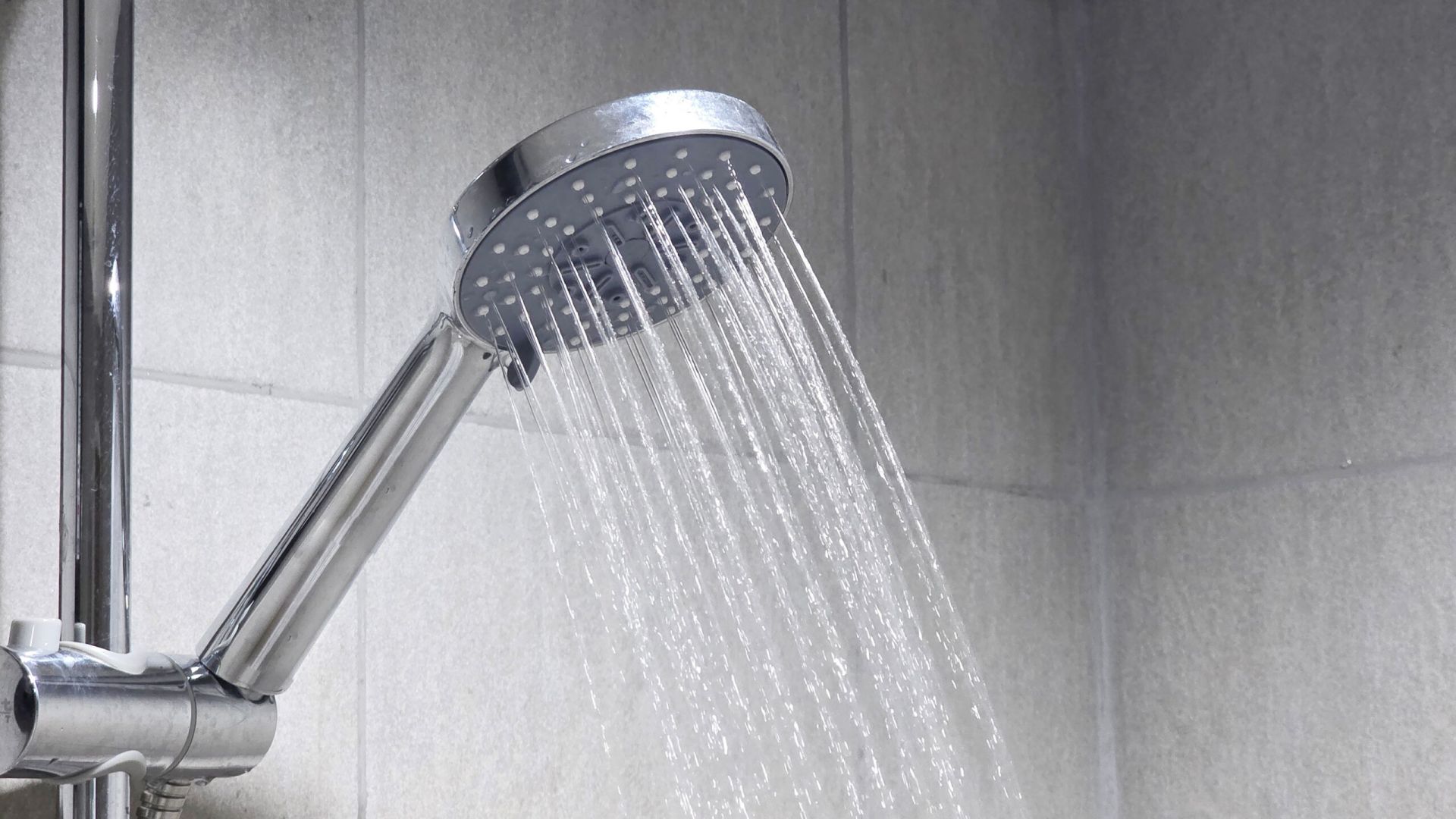
The Difference Between Ghusl (Ritualistic Shower) to Remove Janābah (impurity) and a Common Shower

The Prohibition of Putting Oneself Ahead of Allāh and His Messenger (ﷺ)

